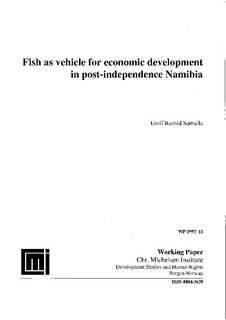| dc.description.abstract | A key fishery policy issue decided by the new government of Namibia soon after independence in 1990 relates to the division of the total allowable catch for hake between wetfish and freezer trawlers. Using economic and social arguments, the government decided to use a criterion of 60:40 in favour of wetfish trawlers. The main question I pursue in this paper is, is this criterion economically sensible? How would the answer to this question be modified if, say, the employment generation capacity of the fishery were to be taken into consideration? The study suggests that based on purely economic and employment generation criteria, only the wetfish traw1ers should be allowed to exploit the resource. However, the impact of other considerations such as biological, market, harvesting, and processing constraints tend to lend support to the current government policy. | |
